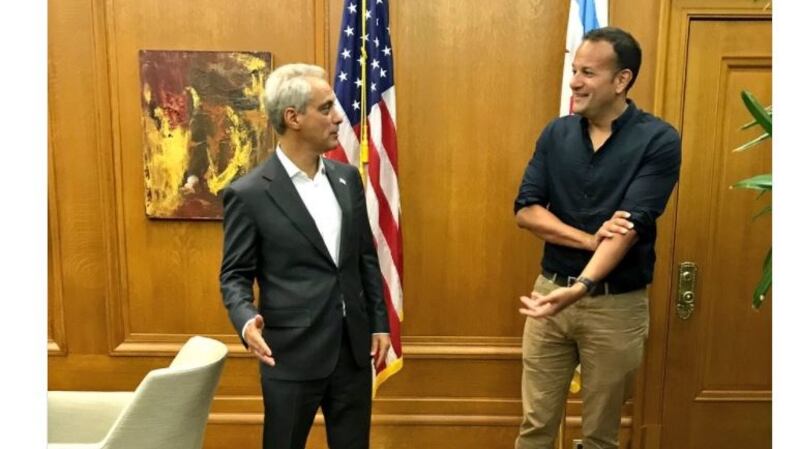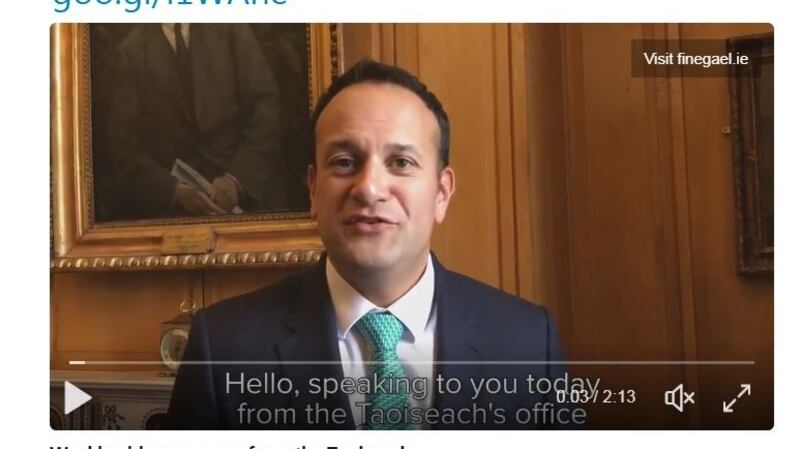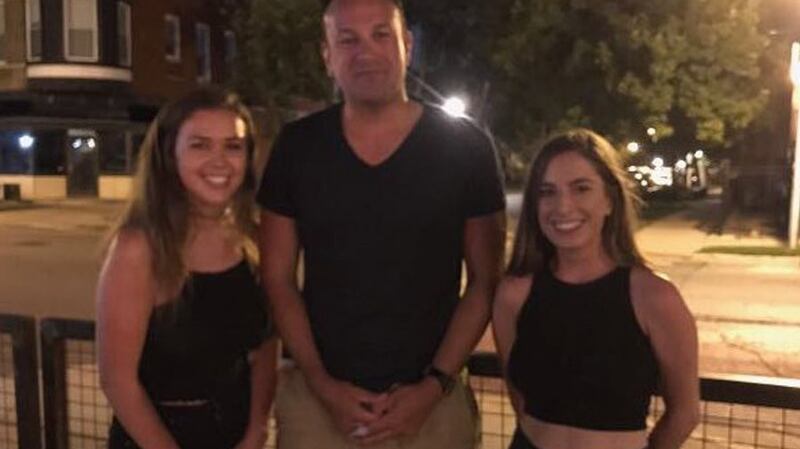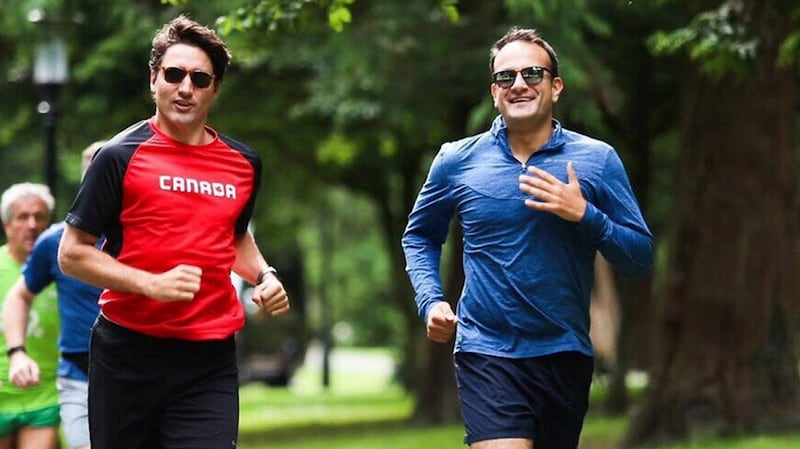Earlier this week Donald Trump was railing at the media on Twitter for calling him out about his moral equivalence on race hate.
“Made additional remarks on Charlottesville and realize once again that the #Fake News Media will never be satisfied . . . truly bad people!,” he harrumphed.
A few hours away, in Chicago, Taoiseach Leo Varadkar replied to an Irish student who tweeted about how mortified she at not knowing who he was and making him wait at a tiny restaurant table.


Painfully awkward pic of us and Leo when I realised it was the Taoiseach pic.twitter.com/7zxs4ugAW1
— Emma Kelly (@__Emmax3) August 14, 2017
Thanks Emma. The food & service was gr8. Enjoy the rest of your J1
— Leo Varadkar (@campaignforleo) August 14, 2017
“Thanks Emma,” he wrote. “The food & service was gr8. Enjoy the rest of your J1.”

Both posts had huge traction with the public. There were voluminous shares and retweets. There the similarities end. When you start parsing the content, they could have been posted from different universes.
Trump has brought a particular way of using Twitter to stratospheric heights. He uses it as a direct, bludgeoning, bullying pulpit to air controversial views and attack critics and enemies. By virtue of his position, every vitriolic pronouncement he makes on the platform becomes instant global news.
With Varadkar, it would take a gargantuan effort to make news out of anything he writes on Twitter, especially since he became taoiseach. Sure, policy and positions are stated, but it’s all safe and a bit bland.
That’s missing the point of his social-media presence. Increasingly for Varadkar, the 140 characters are almost incidental. Like many other younger political leaders, the Taoiseach’s social media strategy focuses largely on image. As time goes on, that will mean more video.
Young, energetic image
It gives an opportunity to a media-savvy Taoiseach to project an image of a young energetic leader, a digital native, a man of action in rolled-up shirt-sleeves, who is a natural when it comes to mingling with people.
You get little vignettes on the non-political side. There are moments of ordinary life – jogging; triathlon preparation; selfies (including self-deprecating ones). There are little slices of personal life, such as the snap with the embarrassed student in Chicago. All of this can be done by bypassing the distorting filter of traditional media. It is sometimes shallow and can be cynical.
Essentially, though, he can shape his own narrative.
One of Varadkar’s early initiatives as Taoiseach was to replace Enda Kenny’s weekly email to supporters with a weekly video, in which he speaks directly to camera. It is subtitled, so commuters with their phones on silent can “read” the video. After a faltering start, they have become more concise and more fluid. Fine Gael data already shows they have had much more impact than the emails, most of which were not opened.
With a nod to millennials, later this autumn he will launch an Instagram account.

If you want to find Varadkar’s template for social media and the use of visuals, you don’t have to look too far. His two political BFFs, Canada’s prime minister Justin Trudeau and French president Emmanuel Macron, have carefully cultivated their social media personae.
A lot of people now surrounding Varadkar in Government Buildings have communications backgrounds, and want him to adopt some aspects of Macron’s and Trudeau’s approaches. Varadkar has used Twitter since 2009, but has upped his usage considerably since becoming a minister. Only one or two of his team have access to his account and he still posts the majority of tweets, said a source with knowledge of how he operates his Twitter account.
“A lot of what’s happened until now has been organic,” said the source. “But we look at the way Trudeau and Macron get their message across and we will learn from them.
“[Varadkar] has friends who are younger who only come to his message on Twitter or Facebook. We are acutely conscious of communicating to that [cohort].”
For now, his 71,000 followers are modest compared to Trudeau’s three million and Macron’s two million and even Sinn Féin president Gerry Adams, who has 146,000 followers.
“The numbers are rising,” says a senior ministerial colleague. “And we realise how valuable that is as an asset.”
Trudeau uses video a lot. He presents video as smoothly as a TV anchor, in French and English, with punchy, on-the-spot reports. Indeed, his video and photos have the feel of reportage. However, his own media team is responsible for them. You see seemingly spontaneous shots of Trudeau jogging past teenagers on the way to a prom, out kayaking, or with his wife Sophie Grégoire and their young children. But then you realise the seemingly random shots are anything but. They have been taken by his official photographer and carefully orchestrated.
Macron is equally astute, but his approach is different. With traditional media he has adapted the so-called Jupiter strategy – limiting his exposure and staying remote and superior, like Francois Mitterrand and Jacques Chirac were.
In modern society, though, the public want their politicians to be approachable, modern and “ordinary”.
Macron bridges this contradiction with a novel social-media approach. While sparring with TV and newspaper interviewers, his social-media strategy is designed to show that he is active as a politician and as a human being, that he is not remote from the people but is down to earth. So we see him with celebrities such as Trudeau, Trump, Bono and Rihanna, in between playing football with kids, or showing his official car (French of course) to a precocious young boy who thinks it should be like something out of Transformers.
The style is different. He never directly addresses the camera. Instead, he is often filmed from behind or over the shoulder, sometimes as he is moving, with the videographer capturing a few minutes of “real” conversation – with Tour de France rider Romain Bardet, or with new French citizens as they receive their citizenship certificates. It has the look and feel of a slice of life or a cinema verité documentary. But it is all meticulously planned.
The potential for manipulation is obvious despite the claim that it is direct, unfiltered communication. As a category, it might be described as “fake PR”.







